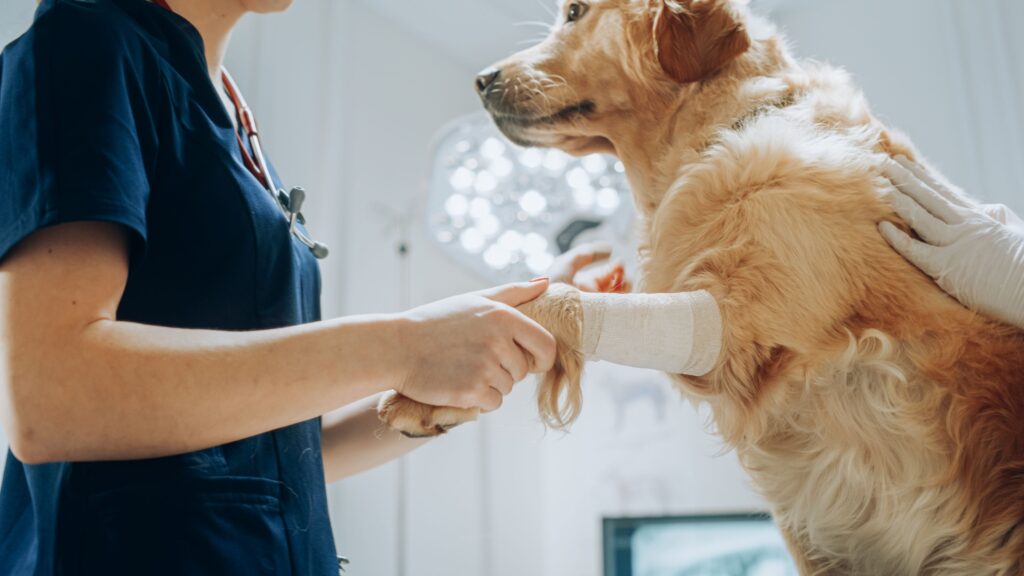
The Importance of Pet Rehabilitation for a Happy and Healthy Life

Physical therapy and rehabilitation isn’t just for people. When our pets experience injuries, undergo surgery, or experience loss of mobility due to aging or other health conditions, pet rehabilitation therapy can help manage pain, promote improved range of motion, and accelerate overall pet recovery.
Read on to learn more about the ways in which pet rehabilitation therapy can help your pet enjoy relief from pain, greater mobility, and improved quality of life.
Pet Rehabilitation Services for Pet Recovery
Pet rehabilitation therapy is a growing field of veterinary medicine that can greatly impact a pet’s overall quality of life. Veterinarians will typically combine therapeutic modalities for optimal outcomes in pets needing to recover from injuries, surgical procedures, or chronic health conditions such as arthritis.
Your pet’s plan for rehabilitation will depend upon the pet rehabilitation center performing the services and the pet rehabilitation equipment they have available.
When tailoring a pet’s therapy plan, the pet rehabilitation center can draw upon a variety of pet rehabilitation modalities, including:
- Treadmill and/or underwater treadmill therapy: Treadmill therapy can be used to help restore a pet’s normal gait, balance, and strength. For more severe injuries, underwater treadmills significantly reduce the stress on a pet’s joints.
- Massage therapy: Great for pain relief, improved circulation, and reduced muscle tightness and pain.
- Passive exercises for non-ambulatory animals: To keep circulation flowing and prevent loss of function in non-ambulatory animals, veterinary professionals can help animals perform passive pet rehabilitation exercises.
- Neuromuscular stimulation: In pets suffering from temporary paralysis in specific muscle groups, transcutaneous electrical nerve stimulation (TENS) can help prevent muscle wasting.
- Laser therapy: Cold (or low-level) laser therapy can reduce pain and inflammation, and promote wound healing.
- Pet recovery exercises: Therapeutic exercises are typically part of any pet recovery plan, and many of the exercises don’t require pet rehabilitation equipment. These exercises, such as stretching, can improve flexibility and strength in a pet’s affected muscle groups.
- Complementary treatments: Acupuncture, chiropractic techniques, and nutritional supplements can be combined with traditional modalities for optimal wellness.
Benefits of Pet Rehabilitation Therapy
Our pets deserve to live their best lives, and pet rehabilitation therapy can have a tremendous impact on injured pets.
The benefits of pet rehabilitation services include:
- Reduced pain and inflammation
- Improved flexibility and range of motion
- Better balance and coordination
- Restoration of normal muscle mass, function, and strength
- Weight loss for obese pets
- Greater quality of life
Conditions That Can Benefit from Pet Rehabilitation Therapy
Chronic inflammatory conditions and injuries that can benefit from pet rehabilitation therapy include:
- Arthritis/degenerative joint disease/disc disease
- Hip dysplasia
- Injuries to muscles/tendons/ligaments
- Spinal injuries/paralysis
- Limb weakness
- Musculoskeletal surgery
- Traumatic injuries, such as being struck by a car
- Obesity
- Nerve disorders
Please contact us if you have questions about the ways in which your pet could benefit from pet rehabilitation therapy or to schedule a visit. Our caring team at Arlington Animal Hospital is happy to help!
Contact Us!
2301 Columbia Pike #G-1, Arlington, VA 22204
Phone: (703) 920-5300
Fax: (703) 685-8860
Email: info@myarlingtonvet.com
Office Hours
-
Monday
8 a.m. – 8 p.m.
-
Tuesday
8 a.m. – 8 p.m.
-
Wednesday
8 a.m. – 6 p.m.
-
Thursday
8 a.m. – 6 p.m.
-
Friday
8 a.m. – 6 p.m.
-
Saturday
8 a.m. – 2 p.m.
-
Sunday
CLOSED
- Doctors’ hours are by appointment only.



